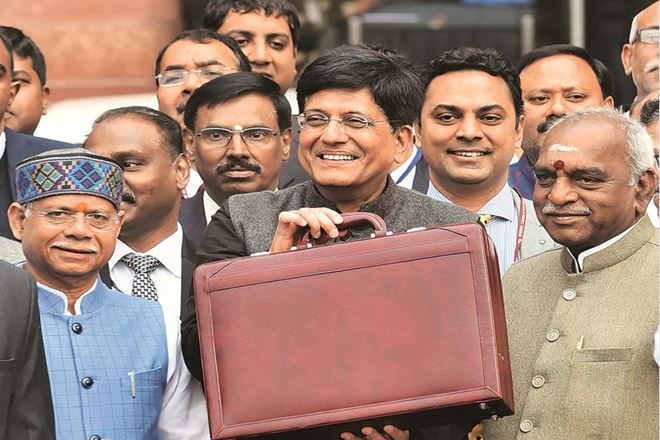Union Budget 2019-20: The Union government has estimated its borrowings for the next fiscal to go up by Rs 79,000 crore (compared as budget estimate of 2018-19 with 2019-20), topping the figure of Rs 7 lakh crore for the first time in the history of the country. In this budget, the NDA government has announced Rs 6,000 support a year to every small and marginal farmer having a landholding of less than 2 hectares. PM Kisan (Pradhan Mantri Kisan Samman Nidhi Yojana) scheme would require Rs 75,000 crore in 2019-20.
A careful examination of the budget papers would reveal that the increase of Rs 79,000 crore in the government’s overall borrowing for 2019-20 is mainly on the account of Rs 75,000 crore budget outlay for the PM-Kisan Samman Nidhi Yojana announced in the election year.
Finance minster Piyush Goyal has pegged the government’s total borrowings in 2019-20 to be Rs 7.03 lakh crore, which is more than double of the government’s total capital expenditure of Rs 3.36 lakh crore for the same period.
India’s total interest payment liabilities are nearly one fourth of its total budget of Rs 27.84 lakh crore in the next fiscal. These two factors, high interest payment liability coupled with high revenue expenditure which has been estimated at Rs 24.47 lakh crore or 88% of the total budget, reflect the inadequate allocation for capital expenditure. Increasing capital expenditure substantially is crucial for achieving high growth rate in an emerging economy like India that requires more roads, ports, schools and hospitals for its growing population. However, India’s capital expenditure has been stuck at just 10-12% of the total budget for last several years.
One of the main reasons behind India’s constantly high revenue expenditure is the country’s large interest payment liability which is almost one third of the total revenue expenditure of the central government. It simply shows that every year the federal government is forced to borrow more and more money to meet its interest payment liabilities. Payment of this extremely large amount of Rs 6-7 lakh crore per year actually doesn’t result in reduction of the Union government’s total debt payment liabilities which has been pegged at Rs 82.03 lakh crore in September 2018 as 95% of the total annual borrowing of the government goes into interest payment of old loans.
In fact, the Union government’s interest payment liabilities for this financial year are Rs 21,000 crore more than the total GST collection for the same period which is pegged at Rs 6.44 lakh crore.
Total debt liabilities of the centre and states above recommended limits
The NDA government under former Prime Minister Atal Bihari Vajpayee had passed a landmark law in 2003 that makes it binding on the central and state governments to follow the path of fiscal consolidation. FRBM Act of 2003, requires the central government to bring down its fiscal deficit to 3% of the GDP and contain the gross public debt, cumulative debt of the centre and states, to 50% of the country’s GDP. However, according to the latest official data for 2017-18, the union government’s total debt of Rs 77.98 lakh crore was 46.5% of GDP as against the requirement of 40% of the GDP. The total general government liabilities (total debt of the centre and states) was Rs 114 lakh crore or 68.2% of GDP as against the required 50%.
However, the words and expressions used in the FRBM Act provide ample room to any government at Centre to easily change the target year for complying with the conditions laid out in the Act. And almost all governments have used these provisions to their advantage. After assuming office in May 2014, Prime Minister Narendra Modi’s government had expressed its intention to stick to the path of fiscal consolidation as an article of faith but electoral compulsions seem to have prevailed over fiscal idealism of the NDA government in its last budget before elections.


